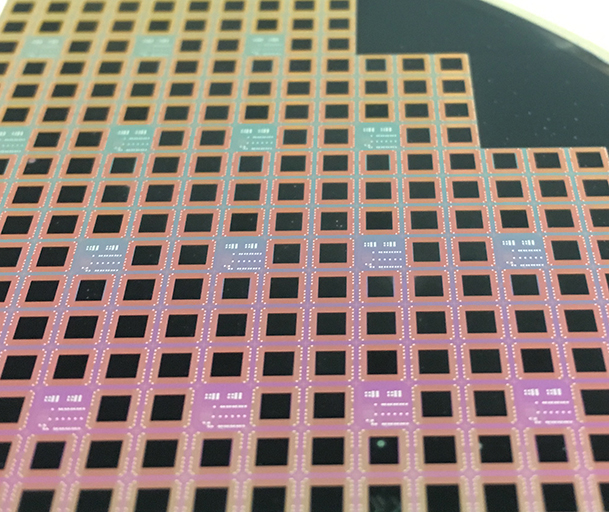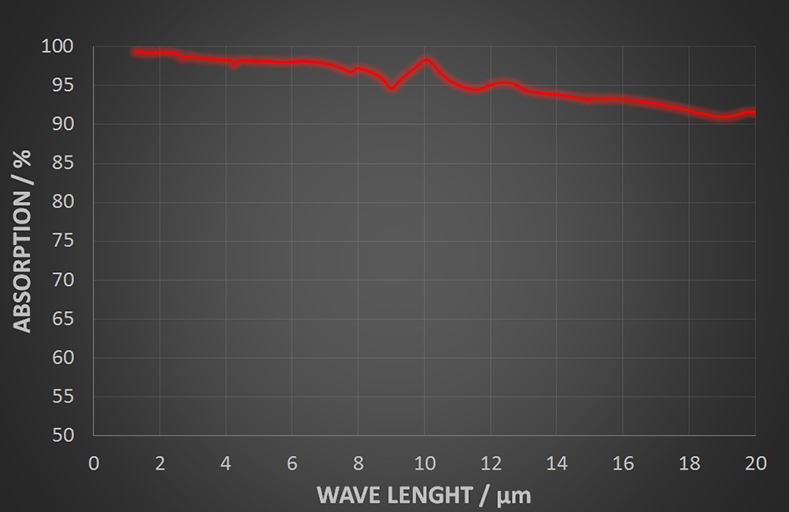Next generation of micro optical infrared (IR) sensors require advanced absorbers, which fulfil tough technological and material requirements. Current solutions, considering materials such as black metals, filled polymers or λ/4 type layers, are afflicted with compromises in absorption level, spectral range, heat capacity, mechanical instability and technology compatibility. A promising alternative represent directly integrated carbon nanotubes (CNTs) as absorption layers. Carbon nanotubes have the potential to overcome the above mentioned limitations by offering a high wavelength independent absorption capability and good thermal and mechanical properties at the same time.
Their scalable integration was addressed in the High-Performance Center »Functional Integration of Micro and Nanoelectronics« with the goal of developing an optical absorber for an IR sensor or emitter. Therefore, a Chemical Vapour Deposition (CVD) process for patterned CNT growth at temperatures below 500 °C and implemented the process into a MOEMS technology was developed. Key features of the obtained CNT-based MOEMS are:
High broadband absorption values above 95 % for λ = 2 … 12 µm and above 90 % for λ = 2 … 20 µm
Temperature stability up to 500 °C in N2 atmosphere
High compatibility of MEMS, MOEMS and CMOS technologies with IR absorbers and emitters
Possible applications are anti-reflective coatings, absorption layers for thermal IR sensors (thermopiles, pyro detectors, e.g. for gas detection and thermography) and black layers for IR emitter (gas detection, e.g. for area monitoring, medicine and safety equipment). CNT absorption layers may also be suitable for high-speed IR sensors due to their good thermal conductivity and low thermal mass.
 Fraunhofer Institute for Electronic Nano Systems
Fraunhofer Institute for Electronic Nano Systems
